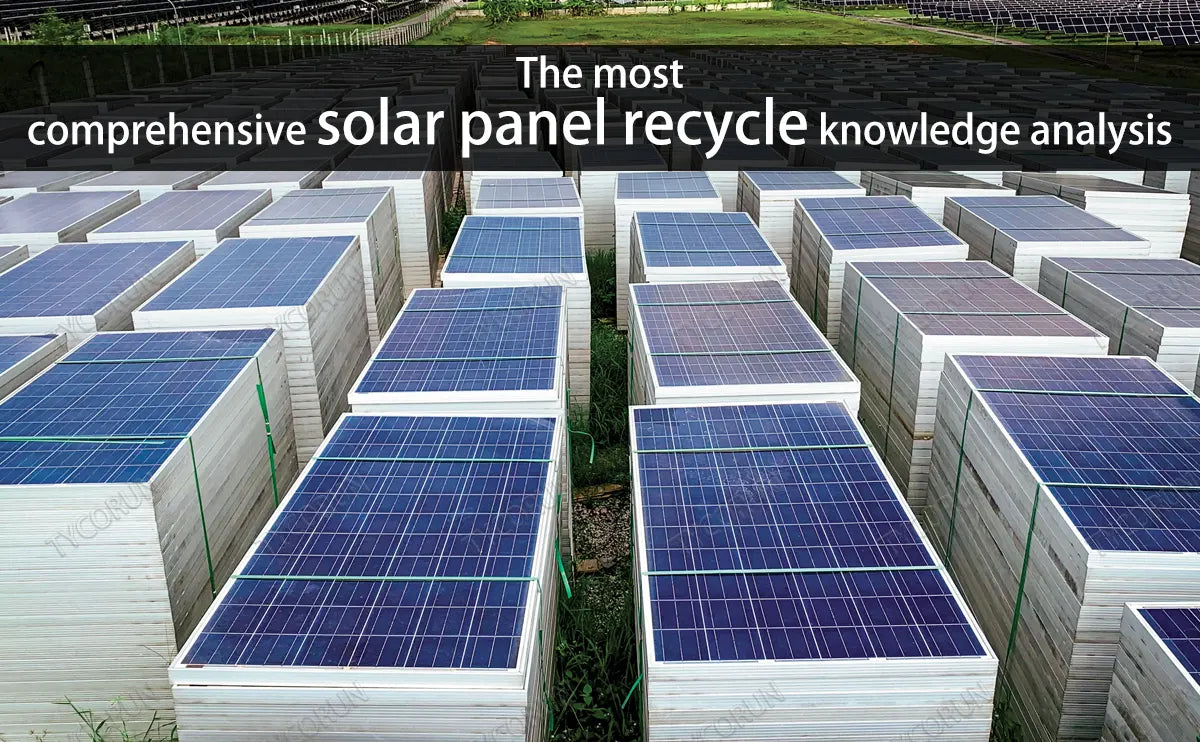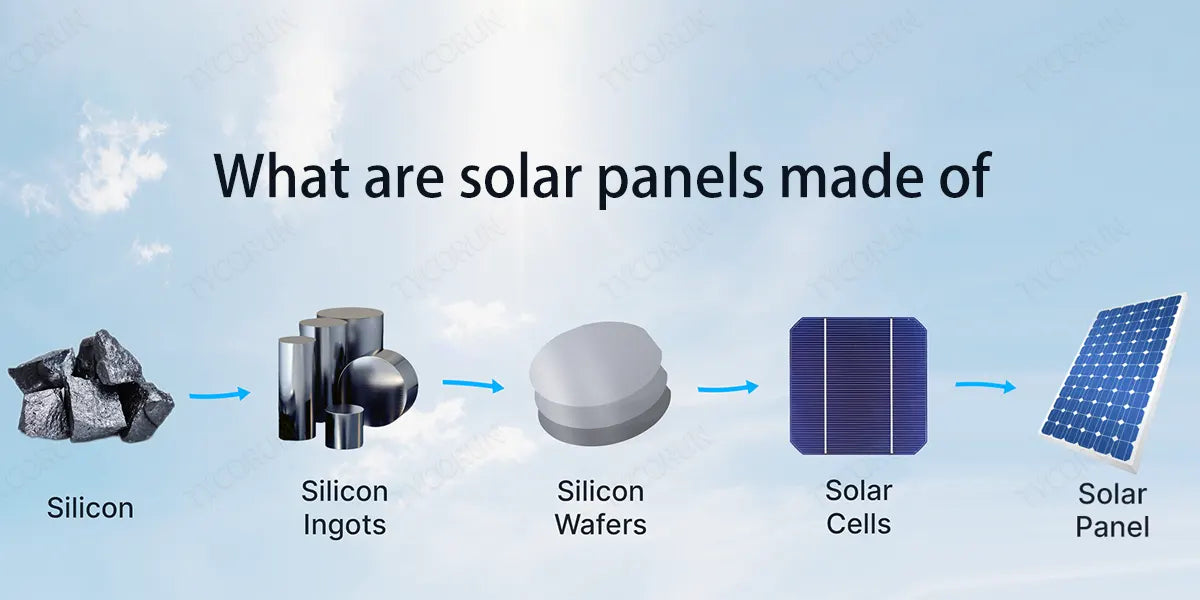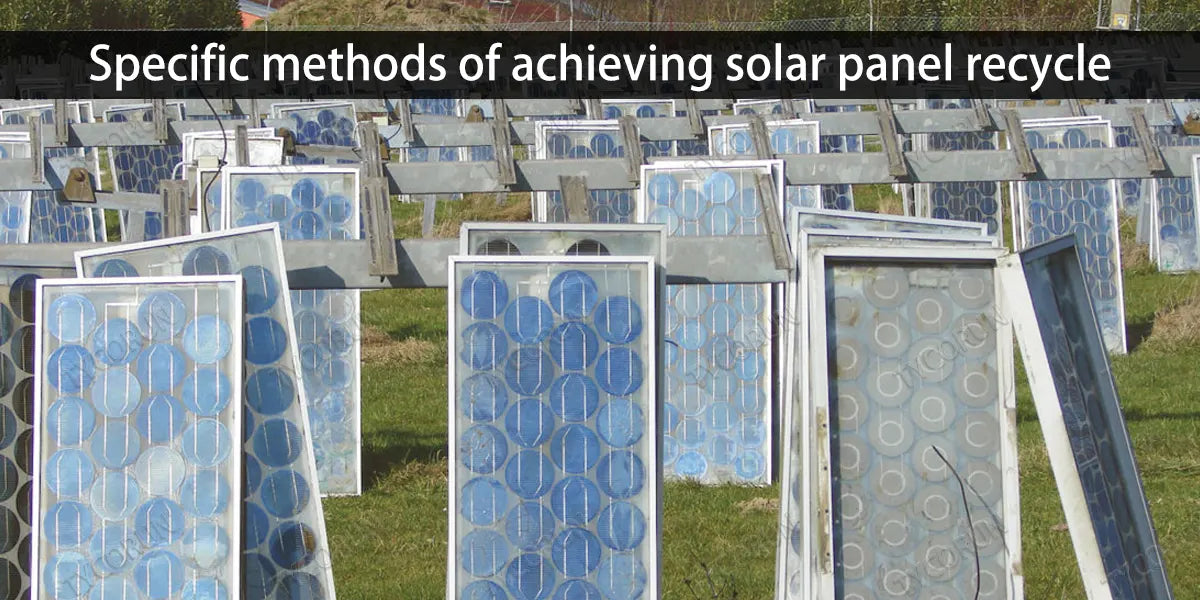
Main content:
Solar panel recycle is the last link in the photovoltaic industry chain. With the large-scale utilization of photovoltaic power generation, the recycling of decommissioning and waste photovoltaic modules has become more and more prominent issues.
And it also brings huge new business opportunities for the industry. Today, this new industry is already on the eve of explosion.
1. What is solar panel recycle
When it comes to solar panel recycle, the reality is more complicated than taking them apart and reusing their components. The recycling process currently in operation is not efficient, not to mention, the cost of material recovery is too high.
But there are incentives to optimize solar panel recycle - reducing the environmental impact of manufacturing emissions, lowering costs, and keeping toxic e-waste out of landfills. With the rapid development of solar technology, proper disposal and recycling of solar panels has become an integral part of the solar market.
2. What are solar panels made of
Silicon is by far the most common semiconductor used to make solar cells. It accounts for more than 95% of modules sold to date and is the second most abundant material found on Earth, followed by oxygen.
- Silicon-based solar panels
Crystalline silicon cells are made of silicon atoms connected to each other in a lattice. This lattice provides an organized structure that allows light energy to be converted into electricity more efficiently. Solar cells made of silicon have a combination of low cost, high efficiency and long life, as modules are expected to last 25 years or more, producing more than 80% of their original power.

- Thin film solar panel
Thin-film solar cell is made by depositing a thin layer of PV material on a supporting material such as plastic, glass or metal. There are two main types of thin-film photovoltaic semiconductors: copper indium gallium selenium (CIGS) and cadmium telluride (CdTe).
They can be deposited directly on the front or back of the module surface. Both CdTe and CIGS require more protection than silicon to ensure long-lasting operation.
3. Why do solar panel recycle
With the worsening of the global environmental deterioration and energy crisis, photovoltaic new energy as one of the important ways to achieve climate goals, installed capacity is growing rapidly.
The large-scale application of photovoltaic power generation inevitably results in the recycling of waste photovoltaic modules. If such a large number of waste photovoltaic modules are not handled properly, the adverse impact on the environment is undoubtedly huge.
However, if handled properly, it can not only help the recycling of resources, alleviate resource shortages, but also cultivate new industries, create more employment value, truly realize the green development of the full life cycle of photovoltaic.

And promote the sustainable development of the photovoltaic industry. PV module recycling is necessary and urgent, but there are still many challenges.
4. Specific methods of achieving solar panel recycle
- Physical separation method
Refers to the component through the crushing, metal stripping, hydrometallurgical separation and other steps to recover metal. The experimental results show that only 17.4% metal recovery can be obtained by this method.
Disadvantages: Not perfect enough to separate each single component.
- Organic solvent dissolution method
Select several organic solvents to soak the crystalline silicon battery sheet to remove the backplane, and dissolve the packaging material EVA with organic solvent to separate the glass from the battery sheet. This method can obtain a complete battery like 12v 100ah lithium ion batteries.
Disadvantages: Only for the removal and separation of EVA, it does not take into account the removal of the border and silicon wafer reuse, and the remaining waste liquid is difficult to deal with.

- Combination of heat treatment and chemical method
Put the panel with the back plate removed in a tube furnace or muffle furnace, and remove the EVA packaging material to get a pure battery piece. Then chemical methods are used to remove the antireflection layer, silver paste and aluminum from the surface of the 12v 200ah deep cycle battery to obtain a pure silicon wafer.
Disadvantages: The recycling of fluorine-containing backplanes can not be burned or buried, otherwise it will bring irreversible environmental pollution and great harm to the human body.
5. What are the difficulties facing the solar panel recycle
- Illegal abandonment and dumping
Distributed photovoltaic power station installed on the roofs of buildings are often abandoned with the demolition of buildings. The ground power station built on the land may be torn down as the land lease expires. If the owner is unable to pay or prepare for recycling of this distributed pv system, the discarded components are likely to be left in place or illegally dumped on other land.
- Potential threat of leakage and diffusion of hazardous substances
In fact, most of the waste photovoltaic panel parts end up being sold as scrap to waste recycling stations. We know that, depending on the type of panel, solar panels contain harmful substances such as lead, selenium and cadmium. When panels are sold to recycling stations, they are rarely properly disposed of.

- Shortage of processing space
Based on the 25-year life cycle of photovoltaic modules, peak periods can lead to temporary shortages of recycling sites. Technical difficulty At present, there are three main mature photovoltaic module recycling technologies, including physical separation, organic solvent dissolution, heat treatment and chemical methods.
6. Can solar panels really be recycled
Solar panels are usually made of materials that can be recycled or reused. Components such as glass and certain metals make up about 80 percent of the mass of a solar panel and are relatively easy to recycle. Similarly, polymers and electronic components in solar panels can also be recycled.
But the reality of solar panel recycle is more complicated than taking them apart and reusing their components. The recycling processes currently in use are not efficient. This means that the cost of recycling the material could be higher than the cost of manufacturing a new panel.
7. Conclusion
On top of that, when it comes to solar panel recycle, it's no easy task, and the process involves a lot of complicating factors. But that doesn't mean we can ignore PV recycling and let it go to waste in landfills.
Related articles: home energy storage, how to clean solar panel, off grid solar batteries
















